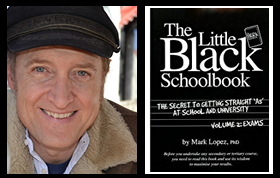Dr Mark’s The Meaning in a Nutshell
Peter Weir (director), Earl W. Wallace, Pamela Wallace, and William Kelley (writers), Witness (1985)
The film Witness (1985), directed by Peter Weir and written by Earl W. Wallace, Pamela Wallace, and William Kelley, is a crime thriller dealing with the struggle of an honest policeman, John Book, against a web of corruption in the police force, which results in a conspiracy being exposed and the corruption being purged from the force. The film also features an exploration of multicultural issues involving a clash of cultures between the modern urban American majority and the pre-industrial rural Amish minority. The film invites the cinema audience to ponder the strengths and weaknesses, advantages and disadvantages, of these contrasting cultures, as well as to reflect upon the benefits and the limitations of cultural interaction. In addition, by reflecting on the culture of the Amish community, the cinema audience is also invited to consider what may have been gained or lost by the process of modernisation.
An investigation by the honest policeman, John Book, into the murder of another policeman becomes a struggle against a secret network of corruption in the police force when the only witness, a young Amish boy named Samuel, indicates that the murderers were other policemen. In this respect, the film reflects the attitude shared by many adherents of the New Left and counter culture of the 1960s and 1970s that corruption in high places undermined the moral credibility of once-revered institutions associated with the liberal-democratic system and capitalist socio-economic order.
The most distinctive feature of the film is its treatment of the multicultural issues arising from the presence of the culturally pre-industrial Amish community of rural Pennsylvania. The film suggests that a degree of tolerance is required by both the mainstream and minority communities. For example, the film depicts cars and trucks held up behind a slower Amish horse and buggy travelling on a road shared by all. Meanwhile, the Amish may have to accept that they will be the objects of curiosity to tourists and others who stare at their quaint manner of dress and old-fashioned behaviours.
A key scene in the film is the barn building scene, which invites the cinema audience to see the Amish community as superior to mainstream society in some important respects. In a celebratory manner, the film depicts the Amish community gathering to build a large barn for a newlywed couple to offer them a solid start in a life of farming. The labour of the community is provided for free and is given happily. This community enterprise is well organised. The results are impressive. This community-oriented approach is presented as an alternative to individualism and the need for money to motivate productive behaviour.
The film invites the cinema audience, whose members are from the culture of the modern world, to reflect upon what was lost or gained by the process of modernisation. Modernity delivered greater power and affluence, but it lost a sense of community that is supportive and reassuring. Modernity offered cosmopolitanism and urban sophistication, but it lost a rural simplicity that is endearing in its closeness to nature. Modernity brought urban living and the many goods and services that are available in city environments, but its landscapes are constrained, dark, and grimy. By contrast, the Amish community lives in a landscape that is bright, lush, green, clean and simple. Modern people are diverse, but some of them are corrupt, intolerant, neurotic, or excessively violent. Meanwhile, the Amish are depicted as wholesome, clean, stable, well-adjusted, community-minded, pious, peaceful, and decent, although some may seem excessively suspicious of outsiders.
When John Book has to stay with the Amish community he immerses himself in their culture, adopting their style of dress and their routines of work, learning about faming. He even joins in with the others in saying grace before meals. He seems to be enriched by the experience. The cultural exchange goes both ways when he introduces the Amish woman with whom he is falling in love, Rachel, to pop music and dancing. However, at this point, the film explores the limits of cultural interaction. The Amish community feels somewhat threatened by the presence of John Book and his budding romance with Rachel. He may take her away from where they feel she belongs. He also brought an appreciation of violence and guns to this pacifist community and this threatens to corrupt the boy Samuel. The love shared by John Book and Rachel was mutually enriching up to a point, but past that point it presented upheavals and problems. The film concludes with John Book and Rachel making the practical choice to end the romance and return to their respective communities.
Student resources by Dr Mark Lopez
© Mark Lopez 2021 All RIGHTS RESERVED
The purpose of the concise notes of Dr Mark’s The Meaning in a Nutshell is to provide much needed help to students seeking to unlock the meaning of the texts with which they have to deal. (More elaborate notes are provided in lessons as part of my private tutoring business.)
Subject: Witness meaning, Witness themes, Witness analysis, Witness notes
